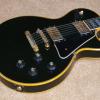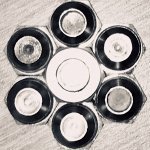Leaderboard
Popular Content
Showing content with the highest reputation on 06/26/2019 in all areas
-
hi guys first of all I'd like to let you know that I read all the threads I found about this same subject and didn't find the complete answers, so I decided to run some tests myself (like I did on the POD HD years ago) and to create a new thread with my results (I'm on FW 2.60 by the way) ok, I'll start from the end results, so that those who just need to have a quick answer can read it immediatly, then I'll give some deeper explanations the main point of this post is: the moment you create a split/merge routing configuration by dragging down a block you get a level change: after the merge block, with all bypassed fx: with split A/B and Y you get +3dB at the output sum with split crossover you get -3dB at the output sum BUT each path by itself gets attenuated by -3dB so if you use the split A/B to switch between sounds, each of those sounds is -3dB qiueter than the same fx/amp with the same settings in a non-splitted path the good news are that the level changes do not actually occur at the split, so the two paths are both an exact copy of the signal before the split, instead the change occurs at the merge block so the right solution is to act on the merge mixer faders --- why? and why those values? • well to answer, I need to clarify two things that I've read someone get wrong and mixed up in other threads 1) when you sum two identical signals in a circuit either analog or digital you get +6dB boost (voltage sum) 2) when you send a signal to a physical speaker and then send the same identical signal also to another identical speaker you get +3dB (acoustic power sum) this is math and physics, not an opinion now, this second point is one of the reasons why something called "pan law" exists: as we said, when you have a mono signal going to two speakers (so the pan knob on a mixer is at the center position) you get +3dB of sound pressure so mixer designers in some cases decided to pad the center position of the pan knob by -3dB, gradually returning to unity gain at the extremes (in some other cases they may use -2.5, -4.5 or -6dB: the actual effect of the pan law depends on the coherence/incoherence of the signals, on speaker placement, on listening conditions, and also on mixing taste I would say, so the designers have to make an assumption and take a plunge, I don't have time to enter into this now, sorry). • now back to the Helix: you have an empty "new preset" patch you have a signal going through path 1 (I used various sine waves and pink noise) you add a gain block at 0dB (if you want you can even bypass it) => nothing changes you drag the block down creating a double path => you get +3dB at the output sum so, what's going on? - the A/B or Y split duplicates the signal to two paths, so each of them carries the same identical signal which goes to a merge block mixer channel, then the two get summed together... so you should get +6dB, but... ... since the pans in the mixer have a -3dB pan law you only get +3dB - the crossover does not duplicate the signal but splits it in two frequency bands, if you sum those two filtered signals you get the exact same signal you had before, so no +6dB boost here, but there is still the pan law, so you get the -3dB - but, as I wrote before, each path by itself gets attenuated by -3dB because of the pan law, so if you use the split A/B to switch between sounds, each of those sounds is -3dB qiueter than the same fx/amp with the same settings in a non-splitted path • please note that these are not theories or speculations, I've tested and measured thoroughly every configuration and I'm sure the Helix routing works like that • all this behaviours occur identically to mono or stereo signals, remember that all the lines representing signal flow in the Helix display are always "double conductor cables" so either stereo or dual-mono (stereo = they carry two different signals; dual-mono = they carry two identical signals) this point could be deepened a lot but I don't have time for this now --- some other considerations: • if for example you open the pan pots of the merge mixer to the extreme L and R, the pan law attenuation does not apply and the level goes back to unity BUT this is not a solution, because if you run in stereo you only get the left from path 1A and the right from path 1B • I'd like to warn you of potential problems I found with the parameters inside the split blocks I) the split A/B "route to" parameter is a balance control, not a crossfader, so moving it to the left attenuates the signal going into B while not touching the signal going into A and viceversa; so it is appropriate to use that parameter to switch from A to B but not too much to find a mix of A with B for 3 reasons: 1- as I said you only have control over the attenuation of one of the two signals you are mixing 2- at center (even position) you have more level than any other position because the two signals are at full level, so the judgement on which is the best mix is compromised for psychoacoustic reasons 3- worst of all: if the blocks in the paths are amps or distortion boxes or compressors, as long as you are not in A100, "even" or B100 positions, you are sending an attenuated signal to one of them, changing its sound and not only its level II) the split Y "Balance A" and "Balance B" parameters (added in fw 2.10 so not covered in the manual) work like this: the stereo or dual mono signal goes into the split, it is duplicated to path A and B and on each of those you can control the balance between left and right, those balance control also have a pan law but different from the merge mixer block pans ! in this case it's unity at center and +3dB at sides ! (I think the reason for this is to avoid an attenuation to the splitted signals at default settings) so if for example you use 2 amps in the paths do not use these parameters or the two amps will receive a different level than if the balance is at center. --- • to finish I'll add two other Helix Routing measurements I found during my tests: - the pan block is actually a balance control with a pan law equal to that applied in the split Y block: at center it's at unity gain, going to the left attenuates the right up to minus infinite and adds +3dB to the left (and viceversa) - unlike the POD HD500 the fx sends / returns on the Helix are all at unity gain levels (+/-0.3dB), thanks Line 6 ! --- thanks for reading, I hope to have been helpful bye Lorenzo1 point
-
For anyone wondering if it's worth it to swap the neck out on a JTV, it is :)1 point
-
I also haven't used a traditional amp since the Helix, and I doubt I ever will. Like others who mentioned it above, I never really owned a high quality tube amp, so my comparison is only with crummy amps or the individual times I've played other people's good amps. For anyone who is interested, my take on the trade off is: 1. The only superior thing about a tube amp (in my opinion only), is the fact that it sounds exactly like the tube amp it is. Pretty obvious, but there is some ... thing ... about it that some guitarists really like that doesn't seem to be replicable. I haven't seen anyone do a really good job of describe what the difference actually is, but my theory is that a lot of what is going on is that you have to play a tube amp at much higher volumes than you can get away with on a modeler. And, despite what our parents told us all through high school, guitars really do sound better when louder. With Helix, and now with an easily annoyed wife and sleeping kid in the house, I usually play at much lower volumes and it definitely sounds worse. In fact, I only mess with settings for a preset to use in a performance when they are out of the house, so that I can play at full volume when I do. 2. Besides the obvious advantages of modelers (variety of sounds, light weight, etc.) I feel like they are more forgiving than tube amps; meaning, you have to be dialed in to just the right settings with a physical tube amp, and that setting is always too loud for the venue. Especially since I started using modelers, whenever I have played on a tube amp at appropriate volumes it has always felt delicate or out of control, like trying to put a sweater on a wet cat. You have to be real gentle and not make any sudden moves, and even then everyone in the room is still going to get scratched in the face.1 point
-
1 point
-
To me personally the cool thing is ya keep your hands on the guitar. You don't have to press a button and then quickly get your hands in position. It sounds like a small thing but it actually helps out a lot while recording. Another possibility is playing to backing tracks. You can skip to the song you want, start and stop it, all while keeping your hands on the guitar. It's not just for recording.1 point
-
1 point
-
Great approach! I didn't look at at it that way. Thanks for sharing1 point
-
I run 2 PC+ cabs in stereo, and it is pretty wonderful. Previously I ran an Atomic CLR cabinet mono and it was pretty great too.1 point
-
Well don’t let “Spikey” know that - he may think it’s aimed at him, especially since that stuff in some previous release notes: ”For those who did complain (AND WE KNOW WHO YOU ARE), the new tuner will be unlocked once you perform ONE of the following:...” And there was also something from a while back about your car radio playing death metal at 5am, or something equally weird.1 point
-
I’ve been impressed by the Line 6 Powercab Plus ... so much so that I bought a second one for stereo. After having tried amps and FRFR speakers this option presented itself and I’m glad I explored it.1 point
-
Does your M20d still work as advertised, and as it did when you bought it? If so it hasn't died. Another update is highly unlikely. It still does what it was designed to do, and what you paid for it to do. You can choose to be disappointed with that if you wish. I'm not at all disappointed with mine - still doing everything I bought it for several years ago.1 point
-
I just installed a set of Graphtech Ratio locking tuners on my Variax Standard. They drop in perfectly and they work great! I took them off of a parts guitar because I kept breaking high E strings on my Variax.1 point
-
The "Set of All Settings" (SOAS) is an analysis of over 550 presets from Line 6, Custom Tone, & Professional users! 40+ Custom Tone "SOAS-Presets" featuring 5-8 Snapshots each! This project consists of several "Sets Of All Settings" or "SOAS-Presets", nearly one per amp model in the Line 6 Helix. I wanted to uncover some good starting points for crafting my own tones, and got a bit carried away...The goal was to see how other Pro/Paid & Custom Tone Helix users were setting up their amps and effects, not to copy their settings, but to see if any patterns emerged between the various parameter ranges. The SOAS-Presets, aren't presets per se; rather they’re "Ante-Presets", meaning that they are what comes before you create your own presets. All values offered here are merely suggestions; they are means and not necessarily ends in themselves. These values should point you in the right direction, but you'll still have to mix and match the various values yourself to sculpt your own custom tone! ​ Each SOAS-Preset consists of 5-8 Snapshots: 1) L6 Default (default amp values) 2) L6 Factory (from the Factory 1 Setlist, generally from presets with the amps name in the title) 3) Average (average of all values) 4) Median (median of all values) 5-7/8) Popular 1/2/3/etc. (#1/#2/etc. most popular values) 7/8) User 1/2 (L6 Default, with Channel Volume dropped to 3. This acts as a place holder, but can be where the user saves their own settings.) For more information and to view all of the SOAS summary charts, please visit the website: https://l6helix.wixsite.com/helixsoas Download Custom Tone SOAS-Presets Here: http://line6.com/customtone/profile/Noobian_Prince Full Setlist download: SOAS-SETLIST 1.0 The SOAS-Setlist features all 43 SOAS-Presets in two arrangements: 1) FS8 = "CAB/IR" = L6 Cab enabled 2) FS8 = "CAB/IR" = IR enabled (set to IR slot #1. User can import their own IRs)1 point
-
!!! SOAS 2.0 IS ALIVE !!! SOAS 2.0 includes: 1) 594 new source presets! total = 1,146 presets! 2) 46 amp models! 3) Dual-Cabs with analyzed optimal cab settings & speaker mixes! 4) Vol (gain) block for Dual-Cabs sum-to-mono/vol leveling (if playing stereo, disable gain block)! 5) Updated settings for Comp, Drives, EQs, and IR high/low cuts! 6) Looper at front of signal path for scrolling through settings! The "Set of All Settings" (SOAS) is an analysis of 1,146 presets from Line 6, Custom Tone, & Professional users! 46 Custom Tone "SOAS-Presets" featuring 5-8 Snapshots each! This project consists of several "Sets Of All Settings" or "SOAS-Presets", nearly one per amp model in the Line 6 Helix. The goal was to see how other Pro/Paid and Custom Tone Helix users were setting up their amps and effects; not to copy their settings, but to see if any patterns emerged between the various parameter ranges. The SOAS-Presets, aren't presets per se; rather they’re "Ante-Presets", meaning that they are what comes before you create your own presets. All values offered here are merely suggestions, not absolutes! Each SOAS-Preset consists of 5-8 Snapshots: 1) L6 Default (default amp values) 2) L6 Factory (normally from the Factory 1 Setlist) 3) Average (average of all values) 4) Median (median of all values) 5-7/8) Popular 1/2/3/etc. (most popular values) 7/8) User 1/2 (Average, with Ch Vol down to 3.) I will be adding more information to the website in the next few days. But for now, most of the new settings summary charts are available on the site. For more information and to view all of the SOAS summary charts, please visit the website: https://l6helix.wixsite.com/helixsoas SOAS Setlist 2.0 & Presets downloads: https://line6.com/customtone/profile/Noobian_Prince1 point
-
One of the unsaid operating assumptions here is that I'm disregarding the "but bruh, different guitars, A2 vs A5 pickups, (un)wound G strings, pick materials, cable capacitance...blah blah...tone is in the fingerz" counter-arguers. It is safe to assume that if over 100 users contributed to these SOAS, that they were arguably using several different playing techniques and types of gear when producing their SOAS worthy presets. Hence, the intent of this project is to create statistically sound ranges of values, rather than definitive "best" values, because we all know there is no such thing as "best" in the guitar world. Unless were talking about Rats as the best dirt box ever, because well, Rats are the f*cking best!1 point
-
There are physical differences between standard mic cable and AES/EBU DMX cable. Mic cables are a twisted pair shielded by a multi braided copper wrap. AES/EBU and DMX cables are a twisted sheathed pair with a twisted unsheathed drain wire, all wrapped in a foil shield AES/EBU can be used for analogue mic signals without issue and is appropriate (even if not perfect) for use for DMX DMX can be used for analogue mic signals without issue and is appropriate (even if not perfect) for use for AES/EBU Mic cable should be avoided for use with digital signals (AES/EBU and DMX) if at all possible although it will work along short runs. Where issues do arise, AES/EBU is the most likely affected. DMX is considerably more happy with the use of standard mic cable. BUT, the BEST COURSE OF ACTION is to ALWAYS TRY TO SOURCE THE CORRECT CABLE TYPE FOR THE APPLICATION. Anything else is simply adding to the risk. As I said first time round, most "DMX" cable sold in Europe is actually 110ohm, ie AES/EBU anyway. Any cable sold as AES/EBU + DMX will likely be 110ohm DMX runs should be "terminated" with a 120ohm bridge across pins 2 and 3 (typically by means of an XLRm plug with the resistor solder inside, plugged into the DMX out of the final light fixture in the run.1 point
This leaderboard is set to Indiana - Indianapolis/GMT-04:00










